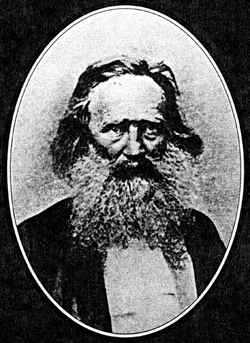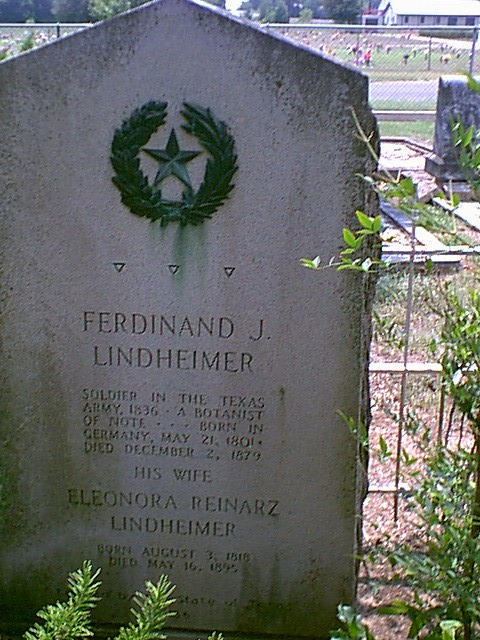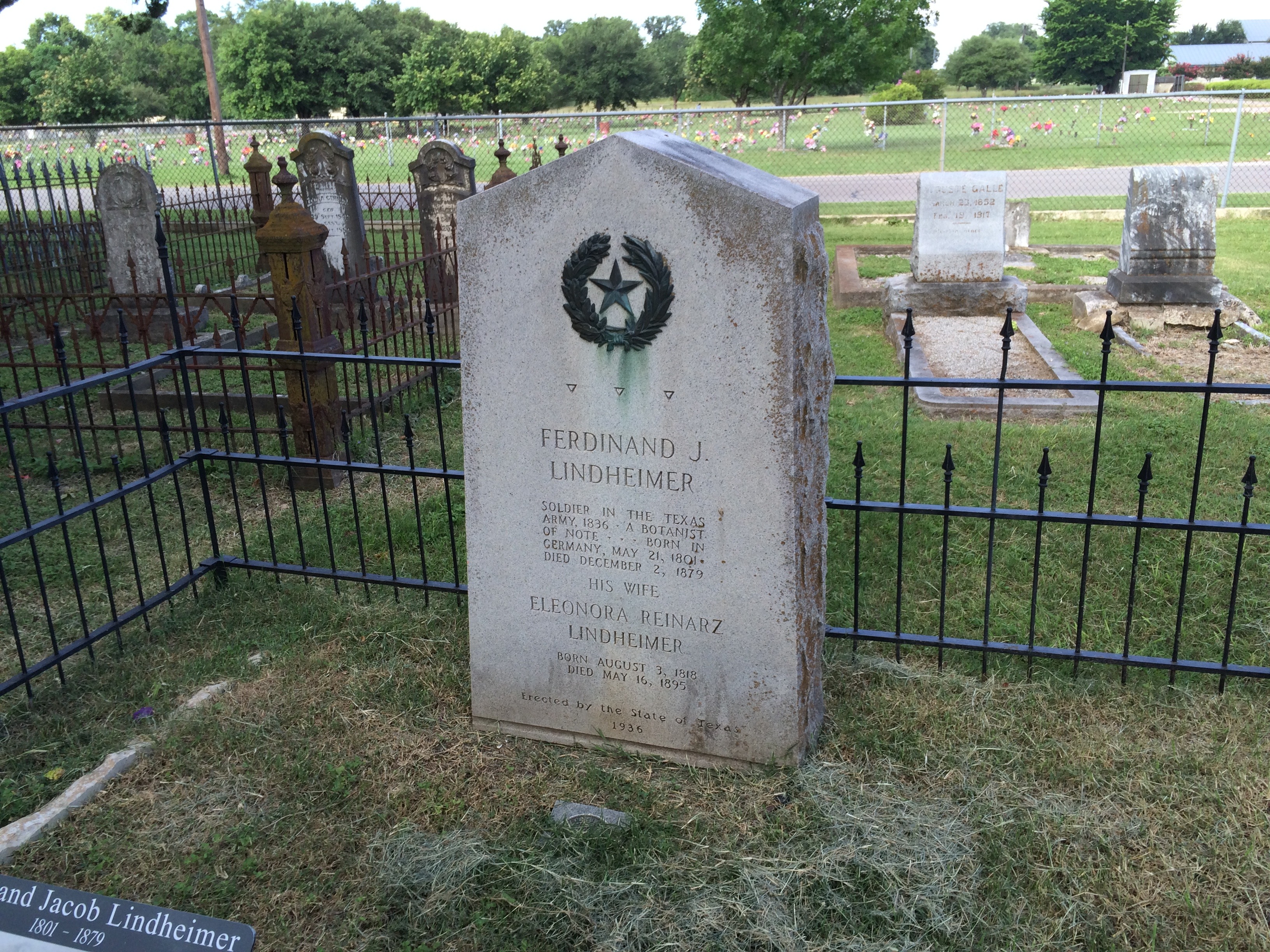Lindheimer was one of many gifted men who came to Texas because of political unrest in the German states. Born into a wealthy family in 1802 at Frankfurt-on-the-Main, Lindheimer attended the University of Bonn and taught at George Bunsen's Frankfort school. After a riot in 1833, the school was closed and six teachers were charged with sedition. Lindheimer then fled to the United States and became the manager of a Mexican plantation in 1834 were he became interested in both insects and plants.
Later, while truck farming near Houston, he began to wonder if he could make a living botanizing. With encouragement from Professor Asa Gray of Harvard and George Engelmann of the Missouri Botanic Garden he did just that. In March, 1843, Lindheimer began his collecting at Galveston and worked his way west.
Today, we study Ferdinand Lindheimer and marvel at his contribution to our botanical knowledge. His life's work in botany is unquestionably massive by any standard. Lindheimer discovered several hundred new plant species
in Texas, with his name being used to designate close to 50 of these including the popular perennial, Gaura lindheimeri. Over twenty worldwide institutions house his collections, including the Missouri Botanical Garden, the British Museum, the Durand Herbarium, and Museum of Natural History (Paris), Russia's Komarov Botanic Institute (St. Petersburg), and universities in Germany and Spain. His herbarium specimens were even displayed at the Paris World's Fair. Lindheimer's entire lifetime of collected Texas species is estimated to be between 80,000 and 100,00 specimens.
In 1852 Lindheimer became the controversial editor and publisher of a New Braunfels, Texas newspaper whose content was said to be beyond the comprehension of the majority. For 20 years he was the editor of the town's German-language newspaper, known then as the New-Braunsfelser Zeitung. Today, the newspaper is known as the Herald-Zeitung.
As editor, Lindheimer persevered in keeping perhaps the only newspaper of its type to continue publishing throughout the U.S. Civil War. He was one of those Germans who felt compelled to support secession or simply to oppose those views proclaimed by Adolph Douai and the Forty-Eighters.
Lindheimer’s home is listed with the National Register of Historic Places, which was added in 1970 (Building #70000744). The address is 489 Comal Ave. and the Lindheimer House was built in 1852 on the banks of the beautiful Comal River near downtown New Braunfels, Texas. His home is currently a museum. Ferdinand Lindheimer died at New Braunfels in 1879 at the age of 78. His name however will live on forever.
Inscription: "A soldier in the Texas Army 1836, a botonist of note. Erected by the State of Texas 1936"
Biographical information found here.
More Biography
Lindheimer was one of many gifted men who came to Texas because of political unrest in the German states. Born into a wealthy family in 1802 at Frankfurt-on-the-Main, Lindheimer attended the University of Bonn and taught at George Bunsen's Frankfort school. After a riot in 1833, the school was closed and six teachers were charged with sedition. Lindheimer then fled to the United States and became the manager of a Mexican plantation in 1834 were he became interested in both insects and plants.
Later, while truck farming near Houston, he began to wonder if he could make a living botanizing. With encouragement from Professor Asa Gray of Harvard and George Engelmann of the Missouri Botanic Garden he did just that. In March, 1843, Lindheimer began his collecting at Galveston and worked his way west.
Today, we study Ferdinand Lindheimer and marvel at his contribution to our botanical knowledge. His life's work in botany is unquestionably massive by any standard. Lindheimer discovered several hundred new plant species
in Texas, with his name being used to designate close to 50 of these including the popular perennial, Gaura lindheimeri. Over twenty worldwide institutions house his collections, including the Missouri Botanical Garden, the British Museum, the Durand Herbarium, and Museum of Natural History (Paris), Russia's Komarov Botanic Institute (St. Petersburg), and universities in Germany and Spain. His herbarium specimens were even displayed at the Paris World's Fair. Lindheimer's entire lifetime of collected Texas species is estimated to be between 80,000 and 100,00 specimens.
In 1852 Lindheimer became the controversial editor and publisher of a New Braunfels, Texas newspaper whose content was said to be beyond the comprehension of the majority. For 20 years he was the editor of the town's German-language newspaper, known then as the New-Braunsfelser Zeitung. Today, the newspaper is known as the Herald-Zeitung.
As editor, Lindheimer persevered in keeping perhaps the only newspaper of its type to continue publishing throughout the U.S. Civil War. He was one of those Germans who felt compelled to support secession or simply to oppose those views proclaimed by Adolph Douai and the Forty-Eighters.
Lindheimer’s home is listed with the National Register of Historic Places, which was added in 1970 (Building #70000744). The address is 489 Comal Ave. and the Lindheimer House was built in 1852 on the banks of the beautiful Comal River near downtown New Braunfels, Texas. His home is currently a museum. Ferdinand Lindheimer died at New Braunfels in 1879 at the age of 78. His name however will live on forever.
Inscription: "A soldier in the Texas Army 1836, a botonist of note. Erected by the State of Texas 1936"
Biographical information found here.
More Biography
Family Members
Advertisement
Advertisement










